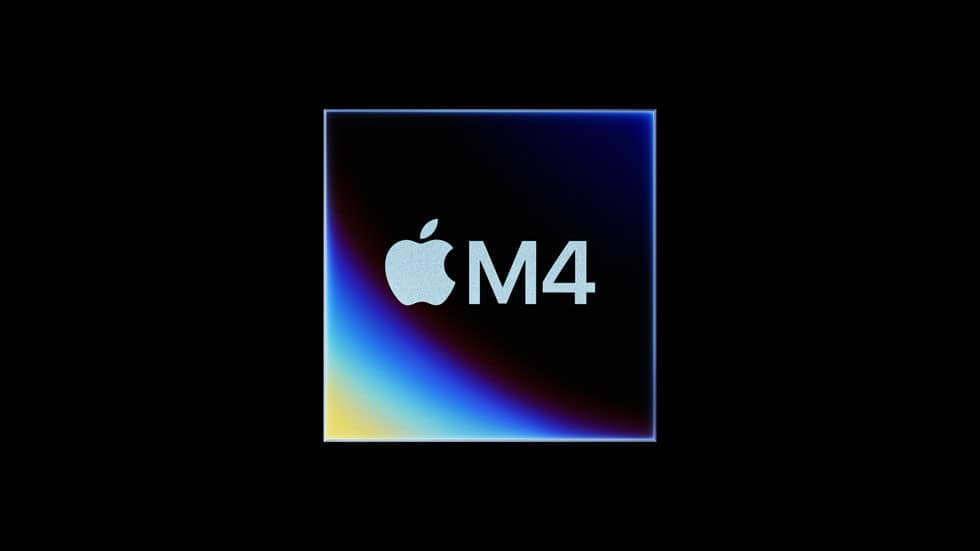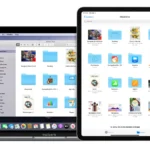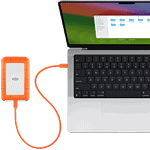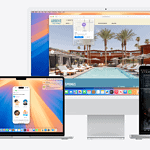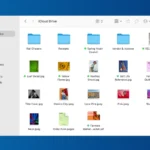Apple’s M4 chip is more than just another iteration in its silicon lineup—it represents the next major leap in performance, AI integration, and energy efficiency across the Mac and iPad ecosystem. Building on the momentum of the M-series chips that replaced Intel in Apple’s computers, the M4 is engineered for the AI era, delivering class-leading performance while maintaining the sleek, fanless design Apple users love.
What Is the M4 Chip?
The Apple M4, introduced in May 2024, is built using TSMC’s cutting-edge second-generation 3nm process. This gives it a major transistor density advantage—housing 28 billion transistors—which translates into more power and better efficiency.
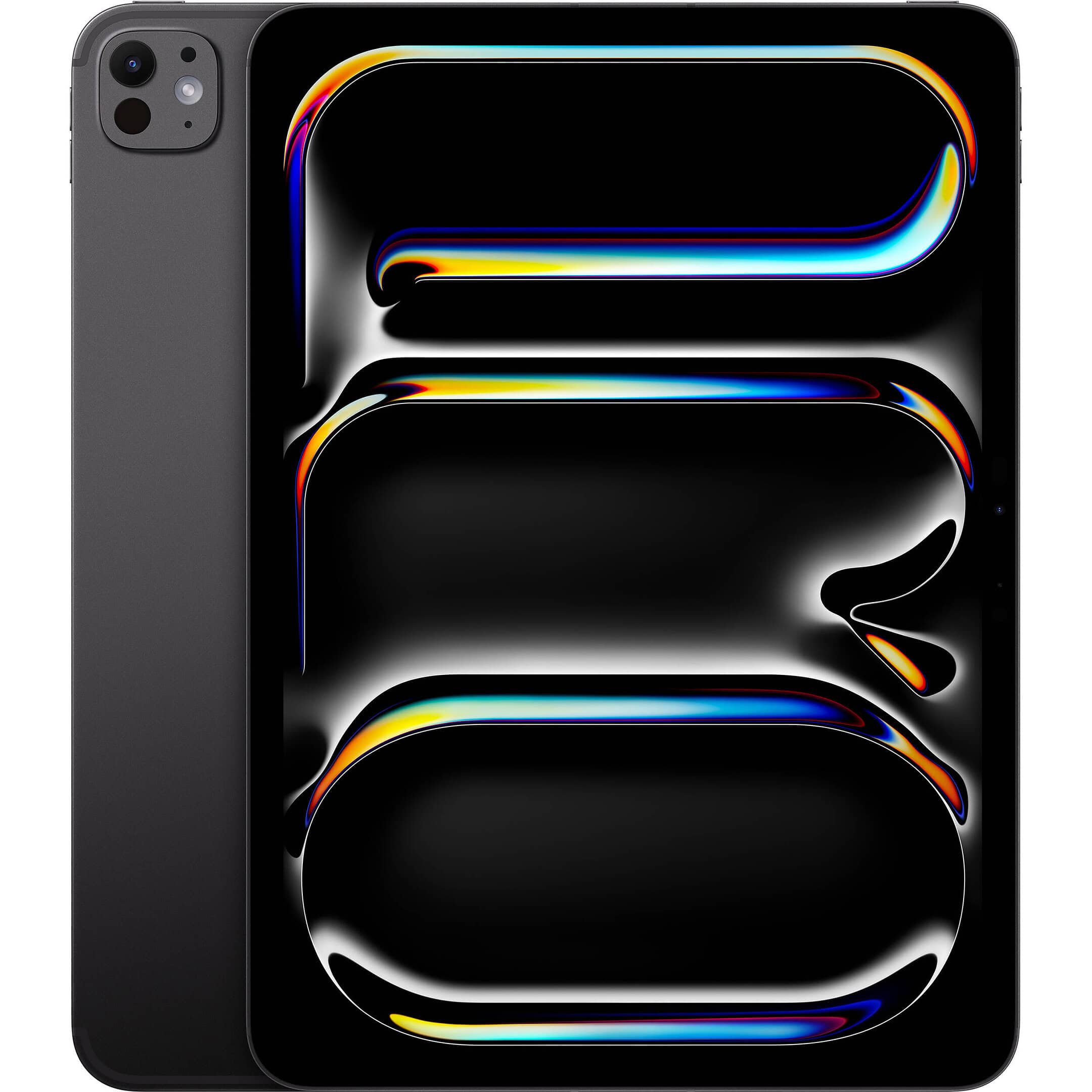
The chip features:
- A 10-core CPU (4 performance cores and 6 efficiency cores)
- Up to a 10-core GPU
- A 16-core Neural Engine capable of 38 trillion operations per second (TOPS)
- Support for up to 32GB of unified memory
Apple’s Neural Engine plays a central role in its long-term AI strategy, powering tasks like real-time transcription, photo editing, image recognition, and Siri enhancements, especially with the upcoming macOS Sequoia updates that bring Apple Intelligence features into play.
Devices Running on M4
MacBook Air (13-inch and 15-inch, 2025)
Launched in March 2025, these are the first laptops to feature the M4 chip. Available starting at $999 (13”) and $1,199 (15”), they represent Apple’s most advanced consumer laptops to date.
Key specs include:
- Up to 18 hours of battery life
- Support for two external 6K displays
- 16GB RAM standard, upgradable to 32GB
- Improved 12MP FaceTime camera with Center Stage
- A refreshed color lineup, including Sky Blue
- macOS Sequoia with Apple Intelligence integration
These models maintain a fanless, ultra-thin design but pack enough power to rival some Pro laptops in day-to-day productivity and even light creative workloads.
iPad Pro (2024)
The iPad Pro was the first device to debut the M4 chip, targeting creative professionals and power users who demand the highest levels of tablet performance. It enables workflows like 4K video editing, AI-powered design apps, and multitasking on a scale that was previously impossible on a tablet.
Performance Gains and Benchmarks
In real-world testing and synthetic benchmarks such as Cinebench R24, the M4 delivers:
- ~30% faster performance over the M3
- ~50% performance lead over Intel’s Lunar Lake Ultra 7 258V
- Minimal thermal gain due to energy-efficient architecture
Early adopters report dramatically improved responsiveness in both everyday tasks and high-performance workloads like code compilation, photo editing, and AI inference tasks.
Deals and Market Positioning
Right now, the 15-inch MacBook Air with M4 is seeing promotional pricing, down to $1,049, a $150 discount from launch. This pricing strategy appears aimed at maintaining Apple’s market competitiveness amid increasing pressure from AMD Ryzen AI laptops and Qualcomm’s Snapdragon X Elite platform.
Looking Ahead: M4’s Role in Apple’s Roadmap
The M4 isn’t just another chip—it’s Apple’s way of prepping its hardware for a deeply integrated AI future. With rumored M4 Pro and M4 Max chips expected to debut in upcoming MacBook Pros and Mac Studio models by late 2025, Apple is clearly doubling down on its performance-per-watt advantage.
This generational leap is less about flashy changes and more about strategic foundations. Critics calling the M4 “boring” miss the point—Apple is laying groundwork for a new era where AI features are built into every interaction, from photo edits to smart calendar suggestions.
| Feature | Specification | Notes |
| CPU | Up to 10 cores (4 Performance + 6 Efficiency) | Base iPad Pro models may have a 9-core CPU (3 Performance + 6 Efficiency). |
| GPU | 10-core | Features Dynamic Caching, Hardware-accelerated ray tracing, and Mesh Shading. Up to 4x faster rendering than M2. |
| Neural Engine | 16-core | Up to 38 Trillion Operations Per Second (TOPS), 60x faster than the A11 Bionic. More powerful than any neural processing unit in AI PCs. |
| Transistors | 28 billion | Built using a second-generation 3nm process (TSMC N3E). |
| Unified Memory | Up to 16GB | Base iPad Pro models with 256GB or 512GB storage have 8GB. Higher-end models (1TB/2TB) have 16GB. |
| Memory Bandwidth | 120 GB/s | LPDDR5X-7500. |
| Media Engine | Hardware-accelerated H.264, HEVC, ProRes, ProRes RAW, AV1 decode | |
| AI Performance | Enhanced by Neural Engine and ML accelerators in CPU. | Up to 3x faster than M1 for AI tasks in MacBook Air. |
| Power Efficiency | Industry-leading performance per watt. | Can deliver the same performance as M2 using half the power, or the same as a PC chip using a quarter of the power (comparisons by Apple). |
M4 vs Snapdragon X Elite vs Intel Lunar Lake
| Feature / Spec | Apple M4 | Snapdragon X Elite | Intel Lunar Lake |
|---|---|---|---|
| Launch Date | May 2024 | Mid 2024 | Expected Q3–Q4 2025 |
| CPU Cores | 10-core (4P + 6E) | 12-core Oryon (Performance only) | 8-core (4P + 4E, new Lion Cove/Skymont) |
| Fabrication Node | TSMC 3nm (N3E) | TSMC 4nm | Intel 18A (advanced ribbonFET) |
| GPU | Up to 10-core Apple GPU | Adreno GPU (desktop-class, DX12 Ultimate) | Xe2-LPG (Arc-based) |
| Neural Engine / NPU | 16-core Neural Engine (38 TOPS) | Hexagon NPU (45 TOPS) | Intel AI Boost NPU (48 TOPS) |
| Unified Memory Support | Up to 32GB | Up to 64GB LPDDR5x | Up to 64GB LPDDR5x |
| Battery Life (Real-World) | Up to 18 hours on MacBook Air | Claimed 20–22 hours (laptops) | TBD (aiming for >15 hrs) |
| Performance (Geekbench 6 Multi) | ~13,000 | ~14,000+ (on reference designs) | TBD (~12,500–13,500 estimated) |
| OS Ecosystem | macOS / iPadOS | Windows 11 (on ARM64) | Windows 11 (x86-64) |
| Thermal Design | Fanless MacBook Air | Fanless & low-power laptops | Likely mixed designs |
Key Takeaways
Apple M4
- Strengths: Extreme efficiency, seamless integration with macOS and iPadOS, strong AI performance with minimal battery drain. Apple controls both the hardware and software stack.
- Weaknesses: Not ideal for gaming or software outside Apple’s ecosystem. Less raw AI TOPS than competitors on paper.
Snapdragon X Elite
- Strengths: Aggressive multi-core performance, integrated cellular support, high AI TOPS, Windows on ARM getting stronger (with Adobe, Chrome, and more now optimized).
- Weaknesses: Software compatibility remains an issue. Many legacy x86 apps still rely on emulation.
Intel Lunar Lake
- Strengths: Will maintain x86 compatibility for legacy apps, significant architectural leap (Intel 18A), integrated AI acceleration, and revamped GPU.
- Weaknesses: Still unreleased, so performance and battery claims are speculative. Delayed compared to Apple and Qualcomm.
Conclusion
- If you’re in the Apple ecosystem, the M4 is the best option today—it balances performance, battery life, and real-world usability.
- If you’re a Windows user interested in AI and long battery life, Snapdragon X Elite laptops launching mid-2025 are poised to challenge Apple in a way no Intel or AMD chip has before.
- Intel Lunar Lake may claw back market share if it delivers on promises later this year, but it faces an uphill battle against Apple’s head start and Qualcomm’s efficiency.
Key Takeaways
- The M4 chip offers 10-core CPU and GPU options with support for up to 32GB memory.
- Apple first added the M4 to iPad Pro before bringing it to the MacBook Air with new color choices.
- The performance jump from previous chips is significant while maintaining the MacBook Air’s thin design.
The Evolution of Apple Silicon
Apple’s chip technology has advanced rapidly since the company began making its own processors. Each generation builds on the previous one with better performance, power efficiency, and special features for AI tasks.
From M3 to M4 – Advancements in Chip Technology
The M4 chip was introduced in May 2024 for the iPad Pro, marking the fourth generation of Apple silicon. This new chip follows the M3 family and brings significant improvements.
The M4 delivers much better performance while using less power than its predecessors. This means quieter desktop computers and longer battery life for MacBooks.
One of the biggest upgrades in the M4 is its focus on AI capabilities. The chip was designed to power Apple Intelligence, the company’s new AI platform that runs on devices instead of in the cloud.
Later in 2024, Apple expanded the lineup with the M4 Pro and M4 Max versions. These more powerful chips offer even better performance for professional users who need extra computing power.
Apple Silicon’s Role in the Tech Industry
Apple Silicon has changed how the tech industry thinks about computer chips. Instead of using general chips from other companies, Apple now makes specialized ones that work perfectly with its own software.
This approach gives Apple a big advantage. They can optimize everything from the hardware design to macOS and iOS to work together seamlessly.
The chips are built using ARM architecture instead of the x86 design used by Intel and AMD. This allows for better power efficiency and performance.
Apple’s switch to making their own chips has pushed other companies to improve too. Microsoft and Google are now working on their own custom chips for their devices.
The M4’s AI capabilities show where computing is heading. More AI processing will happen on our devices rather than in distant data centers, making features faster and more private.
Architecture and Performance
The M4 chip represents a significant leap in Apple’s silicon design, combining powerful CPU and GPU configurations with specialized neural hardware for AI tasks. This chip brings notable improvements across multiple performance metrics that matter to different types of users.
Core Configuration – 10-Core CPU and 10-Core GPU
The M4 chip features an up-to-10-core CPU with a smart mix of performance and efficiency cores. The layout includes up to four high-performance cores for demanding tasks and six efficiency cores for background processes and battery conservation.
This balanced approach helps the system handle both intensive workloads and everyday tasks without draining power unnecessarily. Compared to its predecessor, the M4 delivers up to 50% more CPU performance than the M2.
The 10-core GPU works alongside the CPU to handle graphics tasks. It offers better frame rates for games and faster rendering times for creative applications. The GPU architecture has been refined to process more data simultaneously.
These improvements make the M4 chip especially useful for:
- Video editing and rendering
- Complex photo manipulation
- 3D modeling applications
Impact of the 16-Core Neural Engine on AI
The 16-Core Neural Engine is a key component that powers AI and machine learning tasks on M4 devices. This specialized hardware processes AI workloads much faster than the main CPU, making smart features respond almost instantly.
The Neural Engine can handle complex operations like:
- Real-time photo enhancements
- Voice recognition
- Natural language processing
- Video analysis
This dedicated AI hardware means less strain on the main processor. Apps that use machine learning run more smoothly and efficiently as a result.
The M4’s Neural Engine also enables new AI features that weren’t possible on older chips. It supports more advanced on-device processing, which improves privacy since data doesn’t need to be sent to cloud servers.
GPU Performance for Creators and Gamers
The M4’s GPU brings 4× more performance compared to the M2 chip. This massive boost makes a real difference for both creative professionals and gamers.
For creators, the enhanced GPU speeds up:
- Video encoding and decoding
- Photo filter application
- Color grading
- 3D rendering
Professional apps like Final Cut Pro and Adobe Photoshop run with fewer delays and smoother previews. Large projects that once caused lag now work much more fluidly.
Gamers benefit from higher frame rates and more detailed graphics. Modern games with complex environments and lighting effects perform better on the M4’s GPU. The chip handles both casual mobile games and more demanding titles with improved stability.
The microarchitecture improvements in the M4 represent the largest jump since the A14 generation, giving it better performance per watt than previous models.
Design and Features
The M4 chip brings significant improvements in both design architecture and connectivity options. Apple has focused on creating a balance between performance capability and efficient thermal management while ensuring users have access to modern connection standards.
Innovative Design and Thermal Efficiency
The M4 chip features a thoughtfully engineered layout that maximizes performance while managing heat output. Built on Apple’s ARM-based system on a chip (SoC) architecture, it contains 10 CPU cores and 10 GPU cores in standard configurations.
Apple has refined the thermal design to handle increased processing power without overheating. This allows devices like the MacBook Air to maintain the fanless design that users appreciate.
The chip’s physical footprint remains compact, enabling the stunning design of the new iPad Pro while delivering substantial performance gains. This engineering achievement maintains Apple’s reputation for creating powerful yet thin devices.
Heat management improvements mean users can run demanding applications longer without thermal throttling. This is particularly valuable for professionals working with video editing or 3D rendering tasks.
Connectivity Features – Thunderbolt 4 and HDMI
M4-equipped devices offer robust connectivity options to meet various user needs. Thunderbolt 4 ports provide high-speed data transfer up to 40Gbps, which is essential for external storage and displays.
These ports also deliver power delivery capabilities, allowing users to charge devices through the same connection used for data transfer. This reduces cable clutter on desks and in travel bags.
Many M4 devices include HDMI ports that support 4K and 8K external displays. This makes them ideal for presentations, media consumption, or multi-monitor workstations.
The standard 3.5mm headphone jack remains on most M4 devices, providing compatibility with wired headphones and professional audio equipment. This traditional port continues to be valued by audio professionals and casual listeners alike.
Integration with Apple Ecosystem
The M4 chip enhances how Apple devices work together, creating faster connections between your Mac and other Apple products. This new chip powers improved sharing features and better performance when using multiple devices.
Seamless Experience with MacBook, iPhone, and iPad
The M4 chip makes the connection between Apple devices faster and smoother than ever before. When using a Mac with the M4 processor, features like AirDrop transfer files between devices almost instantly.
Users can start working on a document on their MacBook Pro and continue seamlessly on their iPad without any lag or compatibility issues. The chip’s advanced processing power helps manage multiple device connections at once.
The Handoff feature works better with M4 chips, letting you:
- Begin an email on your iPhone
- Continue writing on your MacBook Air
- Add attachments from your iPad
Apple’s Universal Control works more smoothly with M4, allowing one keyboard and mouse to control multiple devices without interruption.
iPhone Mirroring and Continuity Features
iPhone mirroring on M4 Macs delivers a more responsive experience with almost no delay. Users can control their iPhone directly from their Mac screen, making it easy to respond to messages or manage notifications without picking up their phone.
The M4 chip improves Continuity Camera performance, turning your iPhone into a high-quality webcam for your Mac with perfect sync. Video calls look clearer with better color processing.
Clipboard sharing between devices happens instantly. Copy text or images on your iPhone and paste them immediately on your MacBook without waiting.
Phone calls can be answered on any device with improved audio quality. The M4 chip processes the audio signal better, making conversations clearer even when using your Mac as a speakerphone for iPhone calls.
Display and Audio Technologies
The M4 chip enhances display capabilities and audio performance in Apple’s latest MacBook models. These improvements create a more immersive experience for users working with visual content or enjoying multimedia.
Liquid Retina XDR Display in MacBook Models
The M4-powered MacBooks feature Liquid Retina XDR displays that deliver exceptional brightness and contrast. These screens offer deeper blacks and more vibrant colors compared to previous generations.
The 14-inch MacBook Pro stands out with its mini-LED technology, providing up to 1,000 nits of sustained brightness for HDR content. This makes it perfect for photo editing and video production work.
The display supports ProMotion technology with refresh rates up to 120Hz. This creates smoother scrolling and more responsive interactions for users.
Color accuracy is another strong point, with P3 wide color gamut support that shows more shades than standard displays. Professional creators benefit from this when working on color-sensitive projects.
Sound Quality and Immersion
The audio system in M4 MacBooks has been redesigned to work with the new chip’s advanced processing capabilities. The speakers deliver clearer highs and richer bass than previous models.
The 15-inch models include a six-speaker sound system with force-canceling woofers. This setup reduces unwanted vibrations while providing fuller sound throughout the frequency range.
Spatial audio support creates a three-dimensional sound field when watching compatible content. This technology makes movies and music feel more engaging and realistic.
The M4 chip processes advanced audio algorithms that adapt to different content types automatically. This means clearer dialog during video calls and better instrument separation when listening to music.
Microphone quality has improved too, with studio-grade recording capabilities that capture voices clearly while reducing background noise.
User Experience
The M4 chip transforms how users interact with their MacBooks through smoother performance, longer battery life, and enhanced keyboard responsiveness. These improvements make daily tasks more efficient while providing a seamless experience for both casual and power users.
Enhanced Battery Life for Extended Use
The new MacBook Air with the M4 chip offers up to 18 hours of battery life, allowing users to work throughout the day without constantly searching for power outlets. This significant improvement stems from the chip’s energy-efficient architecture.
Power management has been refined to intelligently adjust performance based on tasks. When browsing the web or writing emails, the system uses minimal power. For video editing or gaming, it allocates more resources without draining the battery excessively.
Users report consistent battery performance even when running multiple applications simultaneously. The system maintains battery health over time through optimized charging cycles.
The battery settings provide useful information about which apps consume the most power. This helps users make informed decisions about which applications to close when trying to extend battery life.
Magic Keyboard and Intuitive User Interface
The M4 MacBook Air continues to feature the highly-responsive Magic Keyboard, which provides tactile feedback and comfortable key travel distance. Typing feels precise and natural, reducing fatigue during long writing sessions.
The keyboard backlight automatically adjusts to ambient lighting conditions. This feature proves especially useful when working in dimly lit environments or during evening hours.
Key shortcuts work more efficiently with the M4 chip, allowing users to navigate between applications without lag. Common commands like copy, paste, and screenshot capture execute instantly.
Siri integration with the keyboard has been enhanced. Users can now access the voice assistant through a dedicated key and receive faster responses to queries about weather, appointments, or web searches.
The trackpad remains spacious and responsive, supporting multi-touch gestures that feel more fluid with the M4’s processing power.
Multitasking and Productivity Enhancements
The M4 chip delivers a significant performance boost that transforms multitasking capabilities. Users can smoothly run resource-intensive applications alongside everyday tools without experiencing slowdowns or system freezes.
Window management has become more intuitive. The system handles multiple displays with ease, maintaining crisp resolution and quick response times when dragging content between screens.
Productivity improvements include:
- Faster app switching without delay
- Smoother split-screen functionality
- Quicker file transfers between applications
- Improved handling of virtual meeting software alongside other apps
Writing tools benefit from the M4’s processing power. Text editors open instantly, and even large documents with complex formatting load without hesitation.
For creative professionals, the ability to run design software while maintaining video conferencing connections has proven invaluable. The M4’s architecture efficiently manages system resources to keep all applications running smoothly.
Pricing and Availability
Apple has positioned the new M4 chip across various Mac products with competitive pricing strategies. The company offers multiple configuration options while maintaining accessibility through a surprising price reduction on some models.
Comparative Value Across Different Models
The MacBook Air with M4 chip provides excellent value among Apple’s lineup. Starting at just $999, the base model is $100 less expensive than its M3 predecessor.
The 13-inch model offers 16GB memory and 256GB storage in the Midnight color option at Best Buy. Trade-in programs can save buyers up to $550 when exchanging similar devices.
For those needing more power, the Mac mini with M4 presents an affordable desktop alternative. It features both front and back ports while supporting Apple Intelligence capabilities.
Apple offers financing options to make these purchases more manageable for consumers. Pre-orders are currently available through apple.com and the Apple Store app.
Cost Analysis: From $999 to High-End Models
The entry-level MacBook Air with M4 chip starts at $999, while the MacBook Pro with M4 has a list price of $1,599. This price difference reflects the Pro’s enhanced specifications.
Upgraded models with larger storage options like 512GB SSD cost more. Memory upgrades also affect pricing, with 16GB becoming standard in some configurations.
Key factors affecting price include:
- CPU core count (10-core in high-end models)
- Storage capacity (256GB vs 512GB)
- Memory configuration
- Screen size (13-inch vs 15-inch options)
Availability varies by region, with some models shipping immediately while others require pre-ordering. Support options differ by product and country.
The price reduction strategy appears aimed at making Apple’s advanced M4 technology accessible to more consumers while maintaining premium positioning.
Software and Compatibility
The M4 chip introduces significant changes to how software runs on Apple’s newest devices. These advancements affect both macOS performance and compatibility with third-party applications.
macOS Optimization for M4 Chip
macOS has been fully optimized to work with the M4 chip architecture. The system takes full advantage of the chip’s unified memory, which allows for faster data transfer between CPU, GPU, and Neural Engine components.
Apple Intelligence features are deeply integrated into the operating system. These AI capabilities work seamlessly with the M4’s neural processing units.
All native Apple apps run natively on the M4 without translation layers. This includes:
- Final Cut Pro
- Logic Pro
- Xcode
- Safari
- Photos
Developers can use Xcode tools specifically designed for M4 optimization. These tools help create apps that use less power while delivering better performance.
Compatibility with Microsoft and Other Third-Party Apps
Most third-party software works well with the M4 chip. Microsoft Office applications run natively on the M4, including Word, Excel, PowerPoint, and Outlook.
For apps not yet optimized for Apple silicon, Rosetta 2 translation technology bridges the gap. This lets Intel-based apps run smoothly on M4 Macs with minimal performance impact.
According to developer forums, plug-ins that work on M1 should also work on M4. This compatibility extends across creative software and utilities.
Many popular applications now offer universal versions that run natively:
- Adobe Creative Cloud suite
- Autodesk products
- Google Chrome
- Spotify
Gaming compatibility continues to improve with more titles supporting the M4’s graphics architecture. The chip’s enhanced GPU makes MacBooks increasingly viable for gaming.
Frequently Asked Questions
Apple’s M4 chip brings notable improvements over previous generations. Here are answers to common questions about this powerful processor.
What are the specifications of the Apple M4 chip?
The M4 chip is built on 3nm technology, making it one of the first mass-produced chips at this scale. It features improved CPU and GPU cores compared to earlier models.
The chip includes enhanced Neural Engine capabilities for AI tasks and machine learning functions. Its memory architecture allows for faster data processing and improved power efficiency.
When was the Apple M4 chip released?
The M4 chip was released in 2024, following the M3 series of processors. Apple introduced it as part of their ongoing strategy to enhance performance across their device lineup.
The rollout began with select products and expanded to additional devices throughout the year.
How does the M4 chip’s performance compare to the M2?
The M4 chip offers significant speed improvements over the M2. It provides better energy efficiency while delivering more processing power for demanding applications.
Users experience faster rendering times and smoother performance in resource-intensive tasks. The M4 is the fastest chip in consumer computers, representing a substantial leap forward from the M2 generation.
Which iPad models are equipped with the M4 chip?
The M4 chip powers select iPad Pro models in the latest generation. These high-end tablets benefit from the increased processing capabilities for professional applications.
The chip enables these iPads to handle complex tasks like video editing, 3D modeling, and advanced multitasking with ease.
What is the price range for devices featuring the M4 chip?
Devices with the M4 chip typically start at premium price points. Entry-level M4 MacBooks and iPads generally begin around $1,200 to $1,500.
Higher-end configurations with increased RAM and storage can reach $3,000 or more. The pricing reflects the advanced technology and performance capabilities of these devices.
In what ways does the M4 Pro chip differ from the standard M4 chip?
The M4 Pro offers more CPU and GPU cores than the standard M4. This provides enhanced performance for professional workloads and complex computing tasks.
It includes additional memory bandwidth and supports more RAM. The M4 Pro is designed for professional users who need extra computing power for tasks like video production, software development, and scientific applications.
The chip delivers better thermal management for sustained performance under heavy loads. This makes it suitable for desktop replacements and workstation-class computing needs.

